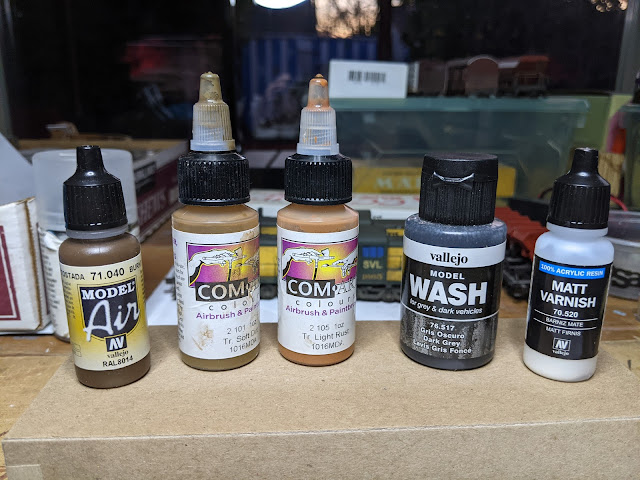Module One was the first complete module I built. It was meant as a test whether I can work with sufficient precision to put together modules. It confirmed I can and I went on to build Untergröningen and other modules. It turned out that using a Fremo E96 endplate on both ends of the module made construction simple, but the module not particularly versatile or interesting. I planned to complete and use the module as staging backdrop for train photos, but eventually lost interest in favor of building modules that supported operations on the Welztalbahn.
Module One had a somewhat awkward size, too, so I decided to convert Module One into two small modules to transition from E96 to F96. That should be easy: Make a cut across the middle, create two modules 8 inch and 12 inch in length respectively, and fit F96 endplates reusing the rest of the module structure.
That was easy. What I didn't consider was the amount of effort it takes to fit an endplate to an existing module under existing track and align it properly with 90 degree angles. I should have just ripped off the track and cut the edge on the table saw. ... But getting out the table saw is quite some effort, too, so it probably worked out to a wash.
After fiddling with hand saws, files, and angle rulers I had a not quite square, but workable cut.
I used a strip cut from plywood on the table saw to align endplate and roadbed and glued it in place. Here's Module 1a.
I cut and fit pieces of pink foam to fill in the gaps, glued them in place, and shaved the scenery contours with a basket rasp.
Meanwhile, I started working on the 12" module, only to find that the existing endplate was not vertical. Instead of trying to fix that, I decided to strip the module, save the endplate and connectors, and toss the rest, so there won't be a Module 1b.
The wiring on Module 1a is as simple as it gets.
I coated the pink foam with tinted Scuptamold and painted it with my regular earth color.
Next stop: grass and bushes.
Adding dirt and glue.
So far, so good.





















































